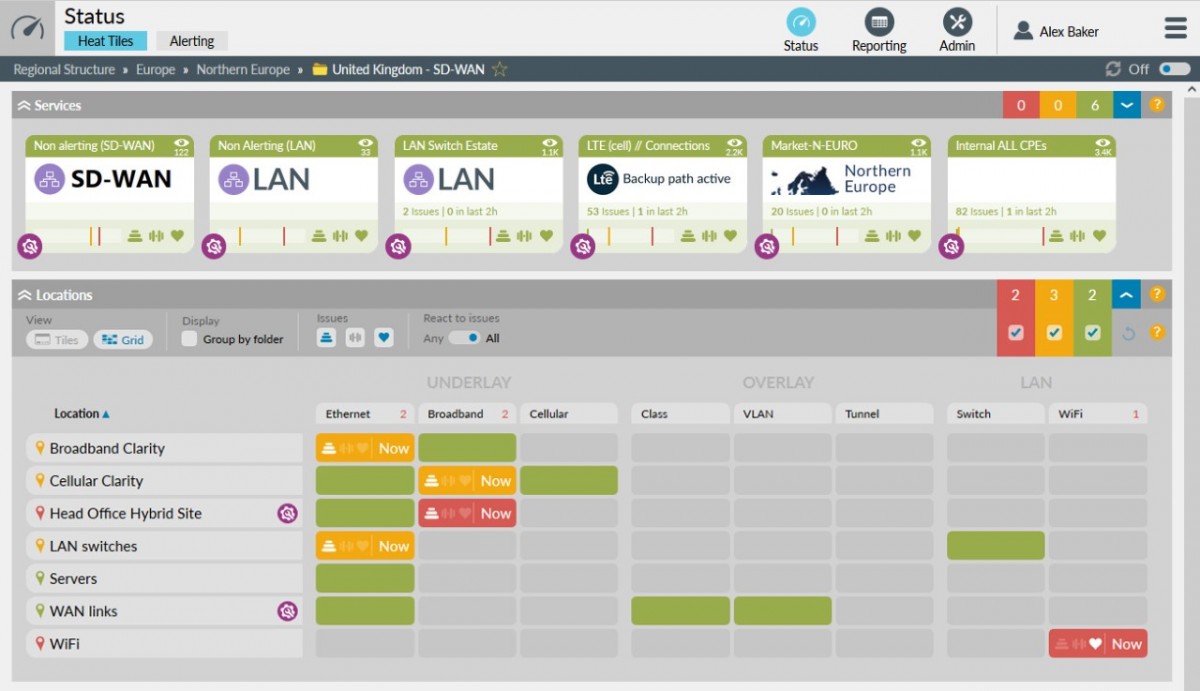Highlight introduces a new Grid View for its leading service assurance platform to give improved clarity and insight into the performance of today’s complex IT networks.
As corporate networking becomes increasingly sophisticated with multiple dependant components, the new Grid View provides a quick and easy to understand view of the status of a network service. Data is presented in Highlight’s web portal for use by those in service management, sales and operations roles as well as by end customers.
The Grid View unpacks one or many locations into their common constituent parts and displays them in Underlay, Overlay and LAN category column groups. These categories and services include Ethernet, Broadband or Cellular underlay connectivity, MPLS private network or SD-WAN overlay, as well as switch and WiFi LAN services.
By displaying the status of these components as a grid, users can scan across a location row to see, at a glance, the status of all services at a location and how a problem with one service may be impacting another, or scan down a column to see the status of common services over many locations that may have a common problem. The grid can also be configured to represent an entire customer as a row, enabling Service providers to quickly check the status of many customer’s services at the same time.
Martin Saunders, Product Director at Highlight says, “Grid View is an extension of Highlight’s popular location tiles which were designed to provide a simple real time view of a network service at any given point in time. Grid View now caters for today’s more advanced customers that have multiple interdependent networking services at their premises. It also enables our partners to assure the best possible performance across all these services without complicating the view.
“If the user spots a problem in an SD-WAN tunnel, for example, they can instantly see if it is caused by the underlay Broadband connection or if the issue is with the tunnel on its own. They can also check if other locations are having similar tunnel issues. This means it is easy to correlate what the cause of a problem might be, whether it is specific to the location, a tunnel or a combination of more than one issue.
“Another important use of Grid View is when Service Providers are migrating customers to new networks. A provider with a customer running a legacy MPLS network that is migrating to SD-WAN can use the Grid to ensure services are running effectively on both old and new networks side by side. The SP can then migrate the customer smoothly to the new technology one connection at a time with full assurance that the technology is working and the transparency of the service isn’t impacted during the migration.”
Gamma is one of the first users of Highlight’s Grid View. Jonathan Butcher, senior service advocate at Gamma says, “The new Grid View makes the complex simple and gives both us and our customers a fast and easy way to understand how their services are performing across all their locations. I can group all my customers with a single view for a high-level summary of all their services which helps me to identify any priority issues.
“When customers see the Grid View, it displays all the service options that are available to them. This has already prompted a few discussions where customers ask if they can add new services such as Cellular or Wi-Fi to their portfolios.”





